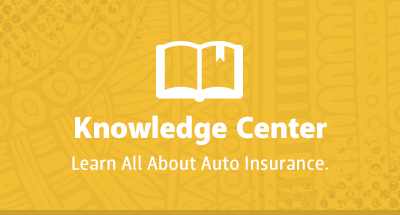Tips for Buying Tires

When it comes to buying a new set of wheels for your vehicle, we understand that price is a major deciding factor. Oftentimes, one considers the option of going the cheaper route in order to save money; however, you may find that isn’t the best way to go. As soon as you start shopping, it’s important to understand the pros and cons of buying cheap tires, as well as cheap used tires. Before you make your final purchase you’ll want to familiarize yourself with some of the following information.
Where to Start When Buying Car Tires
Do you know the difference between Goodyear and BFGoodrich? Bridgestone and Firestone? If you don’t, you’re not alone. Even though tires may seem like a simple component compared to your engine or transmission, they've become high-tech and expensive. Nowadays, tires are one thing you definitely don't want to skimp on. Think about it: those four tires are your only point of contact between you and the road.
As you may already know, tires come in many variations and are designed to fit different vehicles. There are many factors to consider such as: traction, performance, handling, ride comfort, and most importantly, the price. With all these options, it can be overwhelming to know what you need. We put together a list of tools and tips to help you make the buying process a bit easier to navigate.
First Things First: Traction and Age of Tires
If you’re wondering if your tires are worn out, but don't know how to check them yourself, the easiest way is to perform the penny test. The penny test allows you to check how worn down the tread is on your car’s tire. The tread on your tires should be more than 2/32 of an inch deep. To check, insert a U.S. penny into the tread of your tires with the Lincoln’s head facing down. If the top of Lincoln’s head is covered by tire tread, there is an acceptable amount of tread. However, if the top of Lincoln’s head is visible at any point, your tires are worn out and need to be replaced.
Keep in mind that even before the tread is worn out, your tires should be regularly inspected for cuts, cracks, splits, punctures, bulges, and uneven wear patterns. If you notice any of these serious conditions, make sure your tires get checked by a professional who can help you determine if a new tire is needed. In some instances, a vehicle manufacturer may have a time recommendation for tire replacement. If so, you should follow the vehicle manufacturer’s recommendations.
Choosing the Right Tire for Your Car
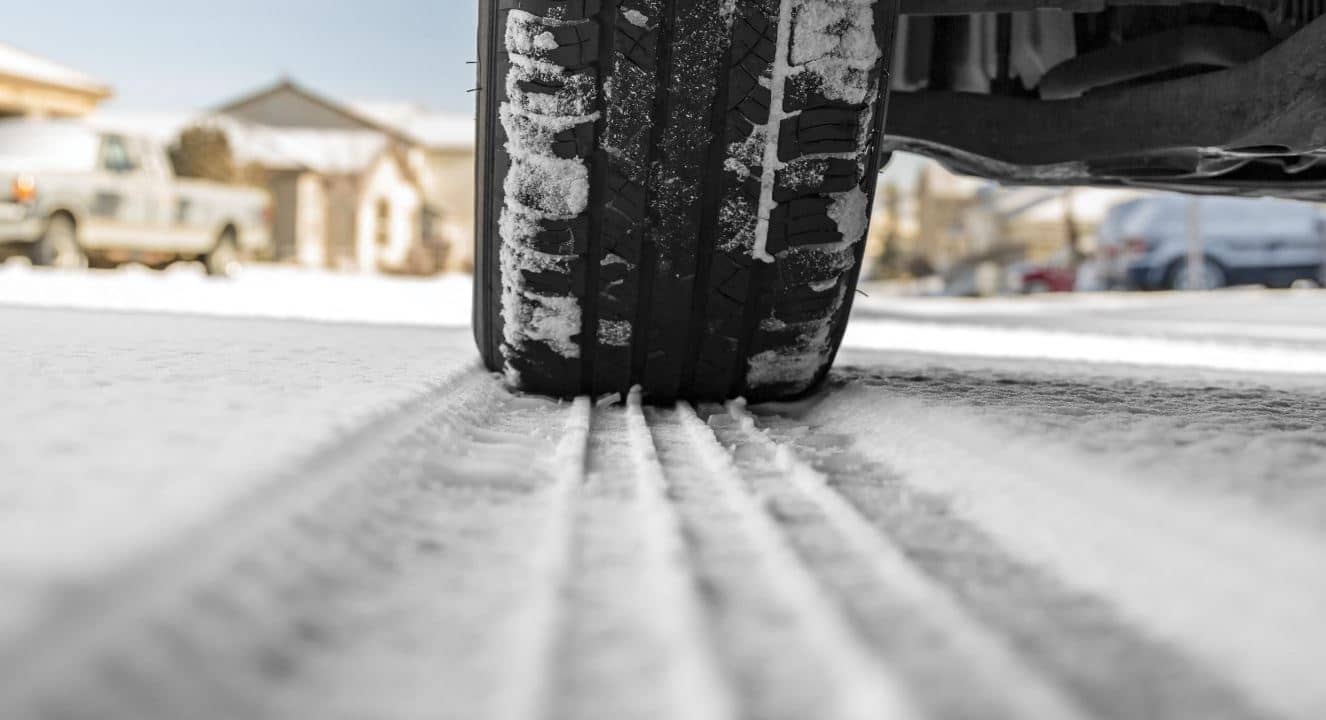
Stumped trying to decide which tire is right for your car? The best way to verify is your owner’s manual, which includes the specifications for your particular vehicle.
A few things to consider when determining the best tire fit:
- Choose a tire based on your vehicle’s make and model.
- Consider the weather conditions of where you live. You may be looking for all-season, winter, or summer tires.
- Reflect on the amount of miles you drive in a typical week.
- Decide how much weight you put in the car or if you haul large items.
Understanding your driving lifestyle can help determine the kind of tires you need. If you need additional help, your dealer or mechanic can use the above information to recommend a tire for you.
Buying and Installing Car Tires
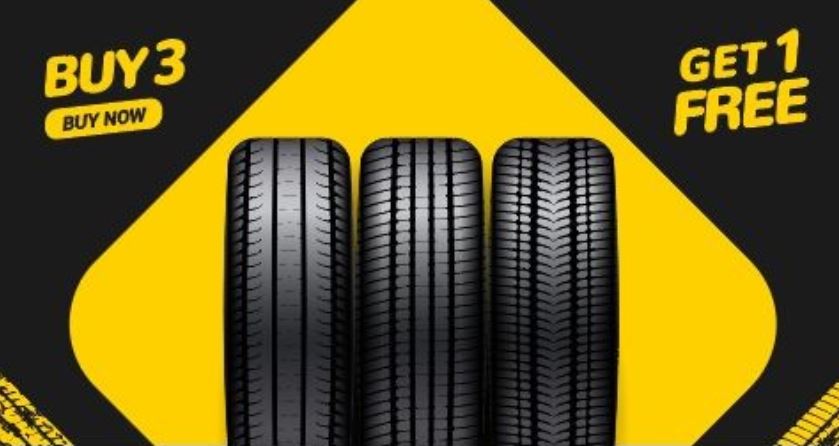
When you are in the market for tires, make sure to buy only what you need. Also, remember to ask if tire balancing and/or alignment is included in your total price.
In addition, here are a few tips we recommend while shopping for new car tires:
- We know that tires aren’t cheap, and it's becoming more common for customers to buy online and have the tires “dropped-shipped” to a local shop for installation. Online tire prices tend to be lower, particularly when compared to costs at dealerships.
- Depending on your state laws, you may be able to avoid state sales tax. However, keep in mind that shipping costs can be high and the shipping can take a few days, so buying cheap tires online requires some advanced planning.
- If you’re uncomfortable buying tires online, you can still use those websites to learn what tires are selling for. Two popular sites are Tire Rack and DiscountTires.com. Once armed with this information, you can negotiate at your local shop, or at least know when you are being taken for a ride.
Tips to Buy Suitable Tires for Your Car
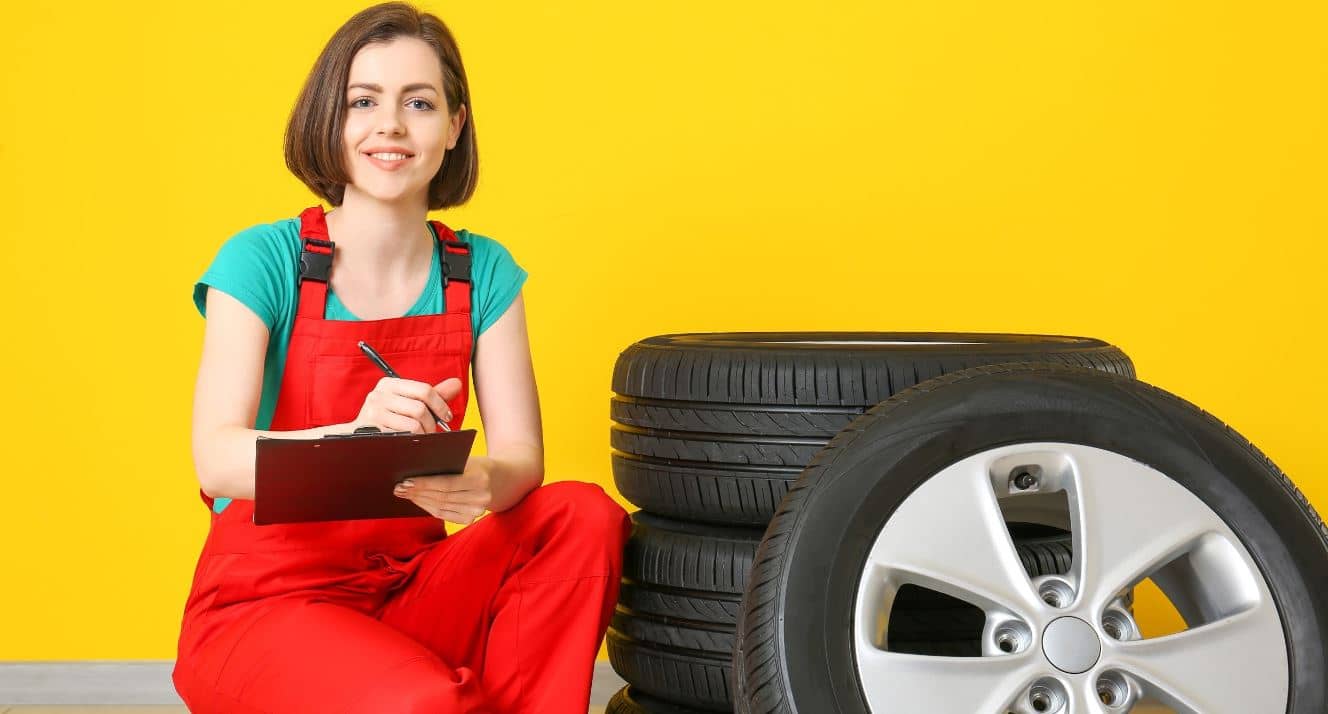
Cheap tires aren’t always better
Sometimes when you skimp on the price of tires, you may run the risk of losing quality as well. You may find that the cheap tires wear out faster and force you to purchase new ones more frequently than you would if you would have purchased a higher quality, more expensive tire in the first place.
You want to inspect the quality of the tire before you make the final decision. Cheaper tires are often more susceptible to rapid tread wear and generally will not last as long, so it may be in your best interest to avoid the cheaper price tag and go for quality tires.
Cheap tired aren't always safe
Having good quality tires is an important safety feature. They provide your car with effective traction while travelling in dry or rainy weather. If you purchase cheap tires, you may be putting yourself and those in the vehicle at risk. Cheap tires may not provide the best traction when it comes to hazardous road conditions. In the end, you must consider if you are willing to sacrifice safety for cost savings.
Age Matters
Naturally, tires deteriorate over time, quicker in hot weather. To check when a tire was produced, you should check a 4-digit number following a letter sequence beginning with DOT, showing the week and year it was manufactured. For example, 5017 means the 50th week of 2017. The picture below shows what each number and letter means on a tire.
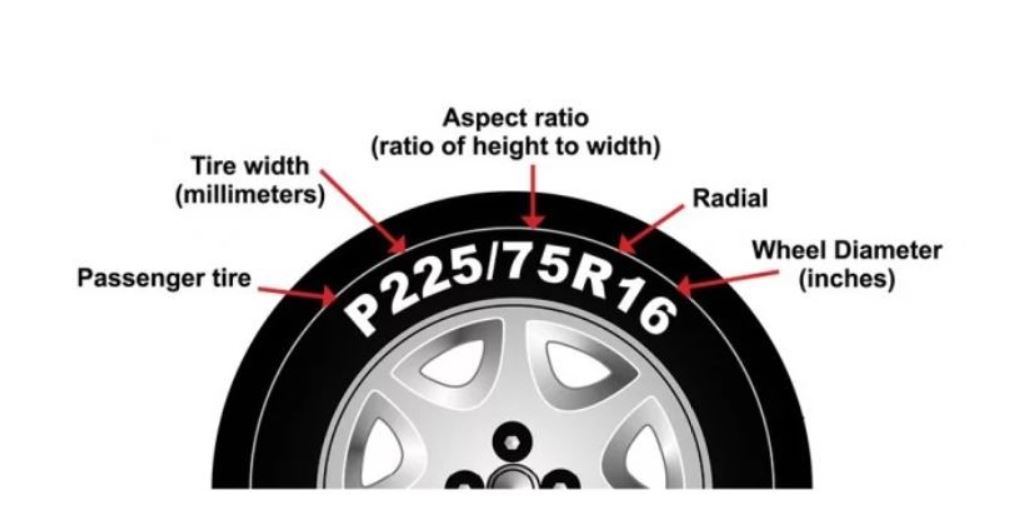
Vehicle manufacturers advise you to replace tires after six years, no matter what condition they are in. Since some car shops stock old tires, we stress the importance of checking the age code to make sure that you are not buying tires that are several years old and well on their way to needing replacement.
Getting the Right Size
In order to find out what the correct size of tire your car needs, you need to look at its sidewalls. There should be a number sequence listed out like: 9265/70R16. Replacement tires should always suit what is noted in your car manual, not necessarily what is currently on your vehicle
What About a Warranty?
Depending on the kind of tire, vehicle manufacturers often advertise mileage warranties, typically between 50,000-100,000 miles. Before purchasing based on mileage warranties, look at the fine print details. For example, if your tires wear out prematurely, oftentimes this doesn't mean that you get a new set for free.
There is a distributed credit for replacement, and for that, you will likely have to prove that you took proper care of the tires. Taking proper care means that you kept them inflated to the correct pressure, rotated, aligned them every 5,000-7,500 miles, and followed all guidelines set out in your warranty. There may be a thorough service record check before the warranty is honored.
Buying Used Tires
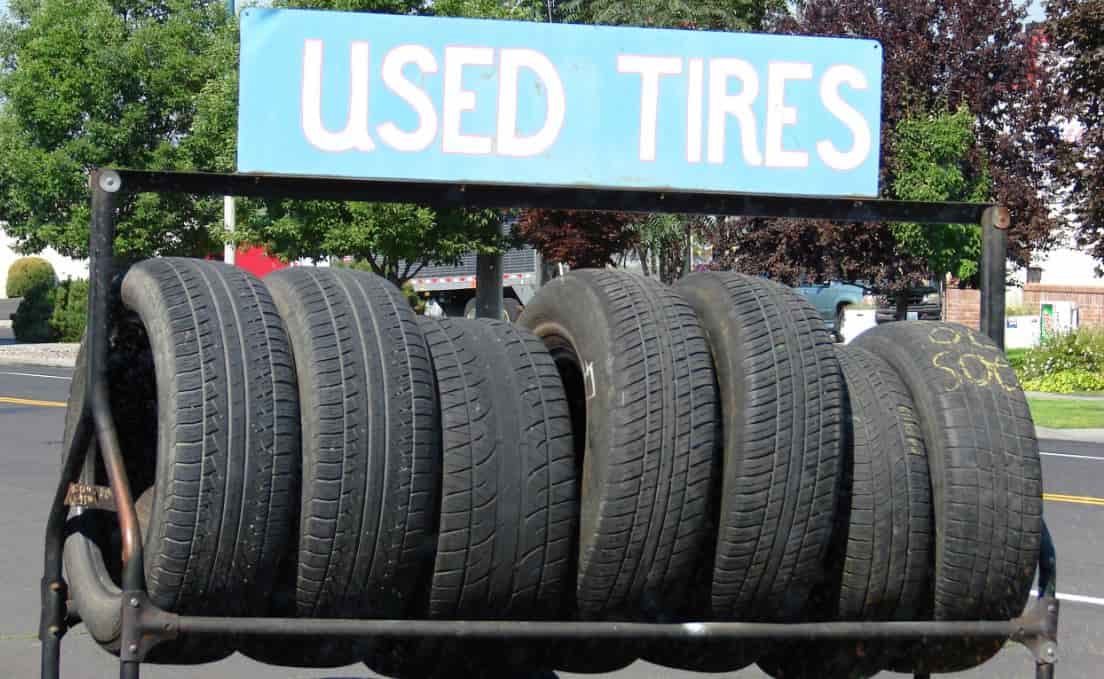
We all know that good tires are a necessity for safety, vehicle performance, and fuel economy. Here is what you must take into account when in the market for cheap used tires.
It’s important to point out that used tires are not subject to any kind of legal standards, and the process of collecting, inspecting, and reinserting used tires into the market varies widely. Some used tire sellers are experts, who will inspect their inventory to make sure their tires are safe; however, many others are not as careful. When buying cheap used tires, you will need to have all of the information in order to know what’s safe and what’s not. If you’re going to buy a used tire, these are the things you should look out for:
Tread Depth: Make sure to bring a penny when buying any used tire, so you can do the penny test we mentioned earlier.
Exposed Cords: Inspect the tread surface throughout the entire wheel circumference. Irregular wear can expose the braided steel cords inside the tire. If you can see the cords, or even a few thin steel wires coming out of the tread, the tire is dangerous and should be avoided.
Belt Separation: Look closely at the sidewall and tread surface for bumps, waves, or other irregularities that may indicate an impact that has caused the rubber to eliminate from the steel belts. You can often feel changes in the rubber surface by running your hands over the sidewall and tread surface even if the irregularity is not obvious when the tire is deflated.
Improper Repairs: Look for punctures in the tire, but also look inside and out of punctures that have been repaired. A proper repair is a full patch on the inside of the tire. Plugs are not inherently unsafe, but patches are much safer. Definitely avoid large punctures or repaired punctures located within an inch of either sidewall.
Aging: Tires deteriorate from the inside out, making it difficult to tell how safe they might be at first glance.The first thing to do is make sure there is a Tire Identification Number (always preceded by the letters DOT on the sidewall). Some used tire recyclers and retailers have been known to scrub the number off. You should be suspicious of any tire that is more than six years old. Also, keep in mind that some people will paint used tires black to make them look newer. We recommend that you use the TIN (Tire Identification Number) to check for any manufacturer's recalls on the tire.
Difference Between Cheap and Expensive Tires
By understanding the different components that influence the price of tires, you can better evaluate your options when it comes to getting good, affordable tires. We want to examine the differences between new and cheap tires:
Durability: The durability of the tires is one of the most important factors in determining whether you will get your money’s worth. After all, tires that are durable will essentially save you money over time.
You will have to do a bit of research and talk to the tire sales person about the construction of the tire.You must determine if the tires are reinforced and that they have sturdy sidewalls; which are characteristics indicating the tires may last longer.
Handling: Better quality tires tend to handle better, which is a factor that can drive up the cost. On the other hand, a tire that will allow your car to have improved handling is not something you want to compromise just to save a few dollars.
Highly-rated tires often grip the road better so that the car does not lose control as easily. The tires will also handle better when taking turns. When your car handles more efficiently, you will be much safer on the road.
Tread: The thickness and pattern of the tread can be a determining price factor. Thicker tread with wider grooves will help your vehicle handle better in snow, ice, rain, and mud. However, the thicker tread will also make more noise while you’re driving.
Summer tires typically have a thinner tread for dry driving conditions. This type of tire drives more quietly, but does not have as much grip.
Drag: Tires that have a higher drag will force your car to work harder, oftentimes resulting in more fuel consumption. They’ll also put more wear and tear on your car.
On the other hand, tires with less drag have a sophisticated design that’ll end up costing a bit more.
Comfort: High-quality tires tend to offer a more comfortable driving experience. They are designed to absorb the bumps and shocks more efficiently along the road. Unfortunately, high-quality tires often come with an increased price tag.
Noise: Cheap tires are often made with less rubber and do not have a very strong structure. These tires tend to be much louder while driving. Keep in mind that other factors can contribute to the noise level of the tire, such as tread depth. Therefore, noise level may not be a good indication of quality.
Name Brand: Like with anything else you buy, choosing a name brand will cost you more money. A name brand tire typically earns its reputation because of its high-quality product. In most cases, you can expect name brands to offer increased performance and long-lasting tires.
Driving With Peace of Mind
When you’re on the market for tires, keep in mind that your safety should be the number one priority. Price does play a big role in your final decision, but make sure to always do your research to get the best deal possible.
Not only do we want you to have the necessary information to buy the appropriate tires, but we also want to ensure that your ride is properly insured. If you need help finding the best auto insurance rate, then you’re in luck. Here at A-Abana, we know how precious your ride is and we want to make sure we do everything possible to keep you and your vehicle safe.
If you need to speak to a representative you can always reach us directly by calling 800-449-0174. Don’t feel like giving us a ring? Get a quote online in less than 10 minutes.


